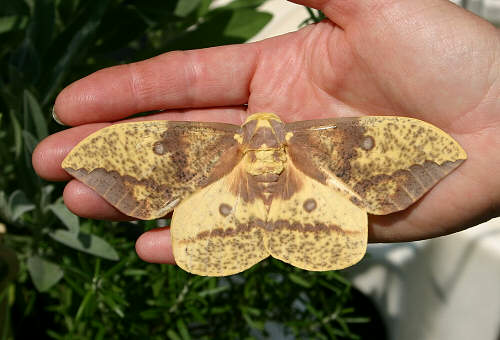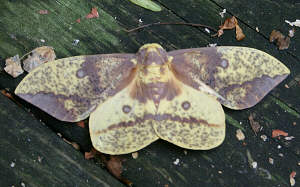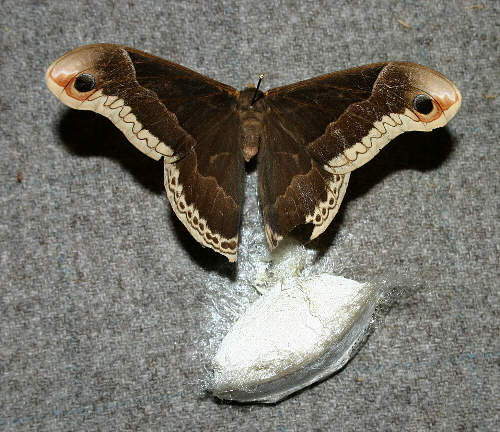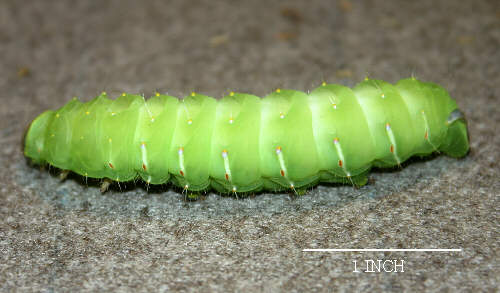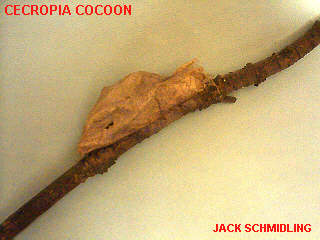
Jack Schmidling Productions, Inc.
18016 Church Road ~ Marengo IL 60152
Phone:815 923 0031 ~ Email:arf@mc.net
| PHOTO OF THE WEEK |
The eggs are laid on the favored food plant and hatch out in a few weeks into the caterpiller form (silk worm). After feeding and growing for a few weeks, they spin silky cocoons on twigs and spend the Winter maturing and waiting for the flight in Spring.

We broke off the twig and placed it in the bughouse for the Winter.
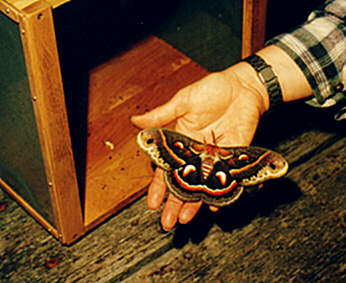
In June, this beautiful Cecropia Moth, emerged from the cocoon.
Much to our consternation, it seemed totally incapable of flight. When pushed off Marilyn's hand, it dropped to the ground like a stone and this situation did not change after several days. Instead of abandoning it to fate, we hung the bughouse (with the door removed) from a branch of the tree where it was found and hoped a male would follow the pheremone trail to fertilize this female.
According to published information, males can detect gravid females from a distance of a half mile or more.
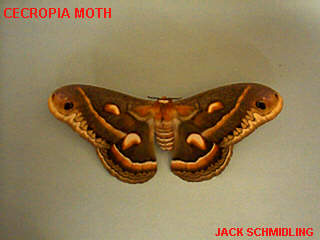
About a week later, she laid a cluster of white eggs and died.
The eggs never hatched so we assume she never found her man.

Walking through the woods with a flashlight, I spotted this beautiful Luna moth hanging on a twig near the ground. My first reaction was to run back to the house for the camera but that usually ends up with a camera and a vanished subject.
I found that breaking off the twig and lifting it didn't seem to disturb it so I carried it all the way back and put it in the "bug house". In the morning, I took some pictures and then released it where I found it. Much to my surprise, it still showed no indication of flying or moving much at all.
After dark, I went back with a light and was amazed to see it flying straight up and down as if it were on a 15 foot string. I presmue (as it was a male), that this was it's arial cortship display although I have never heard this behaviour reported.
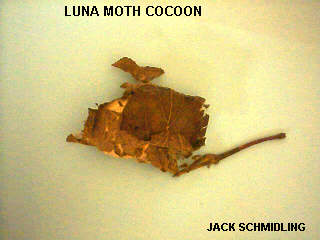
The Luna Moth lays it's eggs on the leaves of hickory and walnut trees which we have many of in our woods.
The mature "silk worm" spins it's cocoon around itself but always attaches leaves to make it less conspicuous to predators. How it does this while spinning itself inside would be interesting to see. The result is a rather messy looking affair but survival is the issue, not silk stockings.
You can see a bit of the silk in the upper left of the cocoon.
NOTE: The Audubon Field Guide to NA Insects states that the Luna is an endangered species but I do not think this is correct in the legal sense of the word. It certainly is rare and in danger of going the way of most beautiful things in nature due to the onslaught of human overpopulation.
